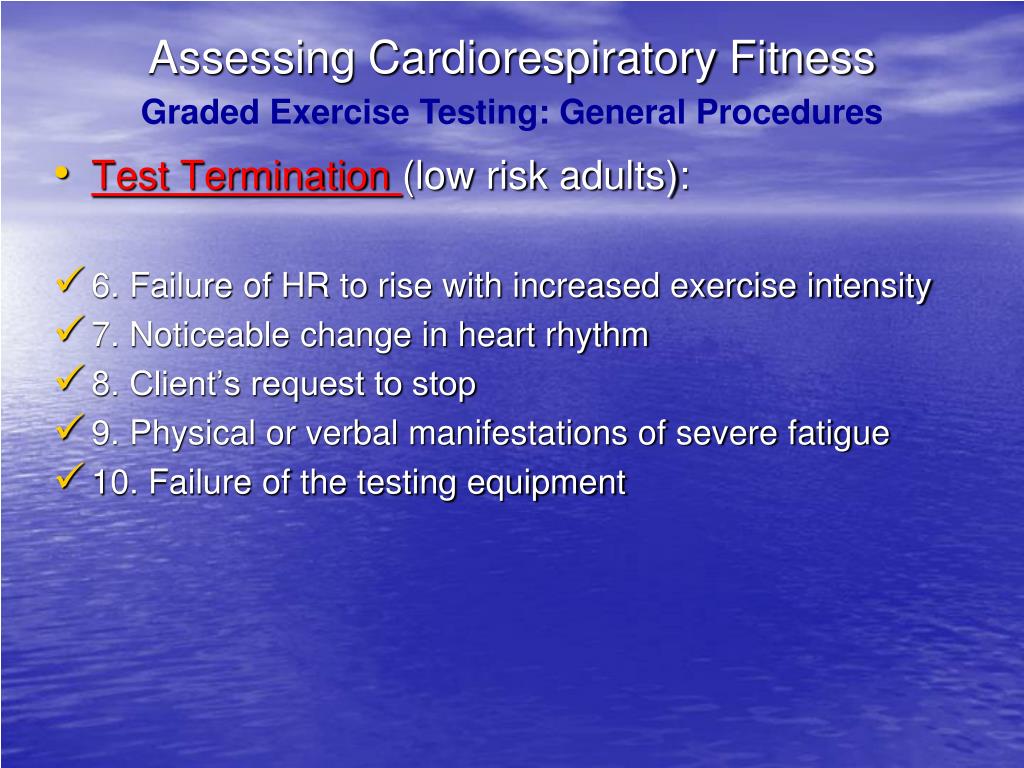

Lavie and co-authors.Given their importance in predicting clinical outcomes, cardiorespiratory fitness (CRF) and muscle status can be considered new vital signs. The long-term health of our populations will depend on the success of these efforts," commented Dr. "We need to do a better job promoting physical activity and exercise training (aerobic and resistance) throughout the healthcare system, schools, the workplace, and society for the primary and secondary prevention of cardiovascular disease. Fitness and exercise are potential ways to avoid daily stress, which can take a substantial toll on human health. In addition to good nutrition and, adequate rest and relaxation, individuals can improve their fitness levels by undertaking regular exercise. Good CRF helps to ward off chronic diseases, provides general well being, and reduces the risk of premature death. The unique aspect of the present UK Biobank study was using a submaximal six-minute bicycle test in a very large cohort to assess CRF and mortality combined with established CVD risk factors."ĬRF is an index of habitual physical activity, particularly aerobic exercise. Although the gold standard assessment of CRF is cardiopulmonary exercise testing and using gas exchange to measure peak oxygen consumption, many clinicians do not have easy access to such testing, and neither do they have the equipment and personnel to monitor these tests, not to mention the moderate expense of this testing. Lavie, MD, Cardiologist, John Ochsner Heart, and Vascular Institute, Ochsner Clinical School-University of Queensland School of Medicine, New Orleans, LA, USA, and co-authors observed that "Certainly, numerous studies show the powerful impact of CRF in predicting risk. "Submaximal exercise testing in order to factor in CRF levels with conventional risk factors should be routinely used by clinicians to determine whether high-risk patients need additional interventions." "Do we really need to make CRF evaluations a standard part of a medical exam? Based on what we learned, the answer is 'yes.' Our findings clearly validate them as vital clinical risk predictors in conjunction with the other factors," noted Dr. During a median follow-up of 5.8 years, 936 deaths occurred within the study group. This is one of the first large scale population-based studies showing that risk prediction can be improved in a pre-screened relatively low-risk population by adding information on CRF, estimated on the basis of a submaximal exercise test, to conventional cardiovascular risk factors. Investigators used mortality data from the National Health Service Information Centre (England and Wales) and the Scottish Morbidity Record, from which they were able to classify the causes of death. The investigators evaluated the impact of the CRF assessment against and in conjunction with risk factors typically measured in clinical practice. This protocol is easily available, has a good safety profile, reliability, and validity. It assessed CRF using submaximal exercise testing in the form of a six-minute stationary bicycle protocol. This study was based on data from the large-scale UK Biobank Study, which gathered information on close to 60,000 participants aged 40-69 years. However, physicians do not routinely assess fitness-in either general or specialized clinical settings-when testing for traditional risk factors. This contributes to difficulties in identifying individuals at increased risk for vascular disease and/or death.ĬRF is recognized as an important marker of both functional ability and mortality and a wealth of literature shows this measure to be inversely and independently associated with vascular disease and mortality. "The predictive accuracy of CRF levels was even more evident when factored in with traditional risk factors such as age, sex, blood pressure, cholesterol, and smoking."Īlthough conventional risk factors such as age, sex, blood pressure, cholesterol, and smoking can significantly contribute to the risk of vascular disease and mortality, these established risk factors are often absent in a large proportion of cardiovascular disease patients. Laukkanen, MD, Ph.D., Cardiologist, Institute of Public Health and Clinical Nutrition, University of Eastern Finland, Kuopio, Finland. The findings enabled new insights into the incremental prognostic value of a CRF evaluation," explained lead investigator Jari A.

"We found that within a contemporary adult UK population with a varied and relatively low pre-test risk profile, greater CRF was strongly associated with a lower risk of mortality. According to a new study in Mayo Clinic Proceedings, taking cardiorespiratory fitness (CRF) into account along with traditional risk factors such as age, sex, blood pressure, cholesterol, and smoking, improves the accuracy of mortality risk assessment.


 0 kommentar(er)
0 kommentar(er)
